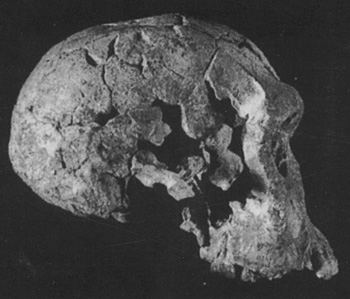
ROBIN DENNELL. The Palaeolithic settlement of Asia (Cambridge World Archaeology). xxiv+548 pages, 172 illustrations, 47 tables. 2009. Cambridge: Cambridge University Press; 978-0-521-61310-1 paperback £55 & $95.

ROBIN DENNELL. The Palaeolithic settlement of Asia (Cambridge World Archaeology). xxiv+548 pages, 172 illustrations, 47 tables. 2009. Cambridge: Cambridge University Press; 978-0-521-61310-1 paperback £55 & $95.
Review by Paolo Biagi
Dipartimento di Scienze dell'Antichità e del Vicino Oriente, Ca' Foscari University, Venice (Italy)
(Email: pavelius@unive.it)

This important volume brings together, for the first time, the information currently available on the earliest Palaeolithic of Asia from the beginning to some 100 000 years ago, that is the period of the supposed appearance of the first modern humans in some areas of the continent, as the author states in the first lines of his preface. Although more recent periods of the Palaeolithic are not discussed in this volume, as one would expect from its title, it is a monumental work that covers an immense area from the Levant to the very far eastern Siberian landscapes, and an impressively long period of time.
The book is accurately subdivided into well-defined chapters, which make its reading easier; 'boxes' dealing with specific topics, such as the distinction between the use of the words hominids and hominins are also provided, which are, in my opinion, of great help to students, to better understand the meaning and history of some terms used by previous and present authors.
Great emphasis is placed on sites of major importance, among which features, for instance, Dmanisi in the mountains of Georgia, which the author discusses with great accuracy. This can also be said of the variable characteristics of the human remains from the same site, difficult to frame into the general picture of the first Homo erectus at the fringes of Europe, its origin and dispersal.
Although the most important earliest Palaeolithic sites are described systematically throughout the volume, after an introductory chapter of basic importance on the 'Climatic and environmental background of hominin settlement', it is somewhat regrettable that the early Palaeolithic archaeological records of a few territories, such as the southern periphery of the Arabian Peninsula, which are supposed to have played a key role in the first human dispersal(s), are not reported in much detail. For instance the 1983-2003 Soviet-Yemeni expedition in south Yemen is not mentioned; it led to the discovery of multi-stratified cave sites and open-air workshops of different Palaeolithic periods, recently published by H.A. Amirkhanov (2006) after a preliminary presentation by the same author (Amirkhanov 1991).
There is no doubt that the great scarcity of human remains from the Indian Subcontinent and other regions of Central Asia makes the study of the earliest Palaeolithic often difficult to follow, especially when the archaeological remains are unstratified surface discoveries, and their supposed chronological attribution can only be suggested on the basis of the typological characteristics of the chipped stone tools, given the absence of radiometrically-datable materials. Nevertheless it is also true that the Palaeolithic archaeology of several areas is almost unknown for lack of systematic research. In many cases our knowledge is limited to a few specific regions. If this is the case for Balochistan or Sindh, for instance, or most of the Iranian uplands, it is also true that controversial discoveries have been made in some of these countries; the author could have discussed them in some detail, or definitely discarded them whenever definitely inconsistent (Hume 1976).
Other important territories are also poorly reported in the volume, even though they are highly relevant within a wider discussion. This is the case of the Orhon Valley in Mongolia, which is currently thought to represent the easternmost limit reached by the Mousterians, while many discoveries made by the Siberian Branch of the Russian Academy of Sciences in the central desert of the same country yielded evidence of an impressive number of early and later Palaeolithic stations (Derevianko 2000). The question posed by the author on page 468 'Did Neanderthals inhabit inland Asia in the Middle Pleistocene?' is still waiting for an answer, as it is the problem of the south-easternmost limit reached by these individuals, as well as that of the Levalloisian technique in most of the Indian Subcontinent.
Apart from the few points reported above, the book is well organised, well illustrated and available at a reasonable price. It is a valuable resource for students and professionals alike.